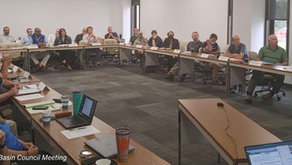Work Management: Best Practices in Planning and Scheduling the Work
- JD Solomon
- Feb 11
- 3 min read

If you’ve ever felt like work is a chaotic mess of last-minute scrambles, constant interruptions, and never-ending to-do lists, you’re not alone. The secret to regaining control? Effective planning and scheduling. These two elements of work management are the backbone of productivity, efficiency, and keeping your sanity intact.
Planning vs. Scheduling: What’s the Difference?
Planning and scheduling often get lumped together, but they’re not the same thing. Think of it like this:
Planning is figuring out what needs to be done and how it should be done.
Scheduling is deciding when it needs to happen and who is responsible for making it happen.
Without planning, scheduling is just throwing darts in the dark. Without scheduling, planning is just a bunch of great ideas with no execution. You need both.
Why Bother with Planning?
Some might think planning is just a bureaucratic time waster, but it actually saves you time, money, and frustration in the long run. Here’s why:
It helps demonstrate the need for more people or resources.
It ensures you’re covering your bases (aka, CYA – Cover Your Assets).
It keeps costs under control by preventing last-minute fixes and inefficiencies.
Simply put, planning is like having a roadmap instead of wandering aimlessly and hoping for the best.
How Many Planners Do You Need?
If you think one person can plan for an entire organization, think again. The ideal ratio is one planner per 14 to 18 technicians. That way, you have enough coverage without overwhelming a single person.
Planners Do Not…
Let’s clear up a common misconception: planners do not:
Schedule the work.
Order or kit parts.
Manage subcontracts.
Perform quality control as their primary role.
30 days Ahead
Planners focus on creating detailed job plans that allow work to happen smoothly. Their job is to think ahead so technicians can spend less time scrambling and more time getting things done.
Normally planners are looking 30 days ahead of when the work needs to get done. They meet with supervisors and schedulers the week preceding the work. If planners spend more than a fraction of their time in the current week, you are doing it wrong!
Who Should You Hire as a Planner?
This might surprise you, but your best technician is often the best candidate for a planner role. They have the hands-on knowledge and experience to create realistic, effective plans. Ideally, look for someone who is:
A trained planner.
An experienced technician.
CMRP (Certified Maintenance & Reliability Professional) or CMRT (Certified Maintenance & Reliability Technician) certified.
The hardest part? Convincing your organization to promote one of its best technicians off the front line. But in the long run, having an experienced planner can make a world of difference in work efficiency.
How to Apply Planning in the Real World
Start small. Take a basic task—like replacing a valve or meter—and create a job plan for it.
This should include:
The number of steps involved.
How much procurement is needed.
The estimated time required.
The level of cooperation needed between teams.
How Long Does Planning Take?
The “Rule of Five” applies here:
1 planner will be excellent.
3 planners will be adequate.
1 planner will struggle.
In other words, don’t overload your planners and expect miracles. Proper planning takes time and attention to detail. It’s an ongoing process, and as Robert Earl Keen said, “The road goes on forever and the journey never ends.”
Keep the End in Mind
The goal is to spend more time doing and less time figuring out what to do next.
JD Solomon Inc Provides Practical Solutions
Work management isn’t about fancy spreadsheets or overcomplicating things—it’s about making work easier and more efficient. With proper planning and scheduling, you can turn chaos into clarity, reduce stress, and get more done with fewer headaches.
Take a step back, plan ahead, and set yourself up for success. Your future self will thank you!




Comentários